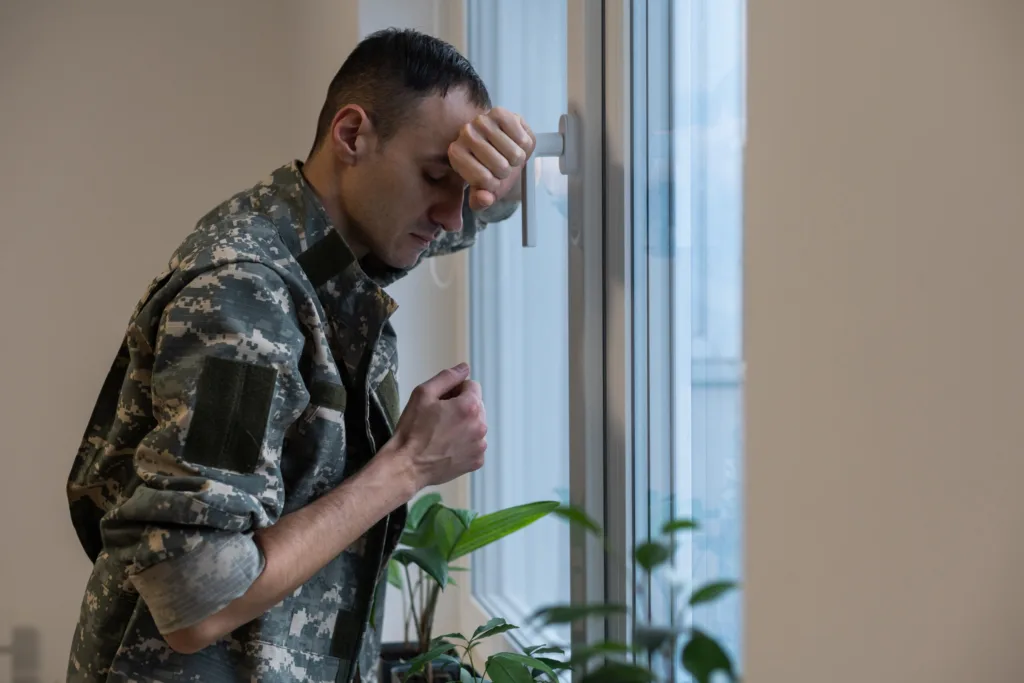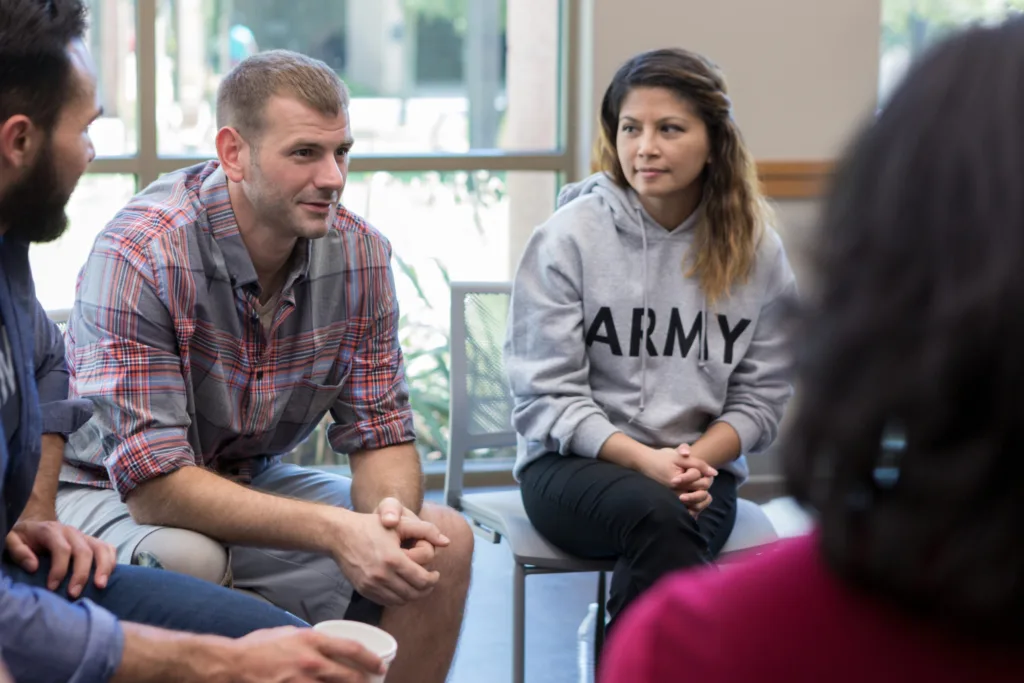Treating Trauma with Polyvagal Theory

Somatic therapy is a body-oriented approach to trauma treatment that is rooted in the idea that the physical body and nervous system are systemically affected and changed by trauma, as the effects of trauma have been “lock-in” or trapped in the body.
Trauma-informed somatic therapy releases these emotions, allowing them to move through nervous system processes, and can include breathing techniques, dance, becoming aware of the body through motor exercises such as balancing or tensing muscles one at a time and more.
Veterans Affairs reports that 23 out of 100 veterans who use VA care have had post-traumatic stress disorder (PTSD) at some point in their lives. As trauma is at the forefront of treating veterans, many behavioral health organizations are now offering somatic treatment in addition to traditional psychotherapy modalities.
What is Polyvagal Theory?
One of the most influential theories in somatic practice is the polyvagal theory originated by Dr. Stephen Porges. The polyvagal theory centers on the autonomic nervous system as a key component in trauma recovery. When a traumatic event (or series of traumatic events) occurs and the shock or trauma goes untreated, the nervous system may not recover.
PTSD and other trauma symptoms emerge when the nervous system operates from a maladaptive state, meaning the nervous system doesn’t behave within what would be considered normal functioning and is stuck in a fight/flight/freeze/fawn state or in a combination of those. Some examples of a traumatized nervous system include hypervigilance, inability to participate in daily life, long-term fatigue, and feeling numb or shut down. A traumatized nervous system also prevents proper connection with other human beings, even with people the traumatized person considers safe.
Essentially, the polyvagal theory describes the connection between a person’s nervous system and social behavior, determining how safe they feel to engaging with life. The most basic premise of the polyvagal theory is somatic healing through bodily work to create a safe connection with others, which is called co-regulation.
The Vagus Nerve
The core of the polyvagal theory rests in the tone of the vagus nerve. The vagus nerve is the main neural component of the parasympathetic nervous system, which is the “rest and digest” mode that kicks in when someone feels safe and comfortable. The vagus nerve is a cranial nerve that starts in the brain and ends in the abdomen and is responsible for the involuntary functions of the heart, lungs, digestive system, liver and kidneys.
A vagus nerve with a strong tone adequately recovers heart rate to a normal level after rising for any reason, sends appropriate hunger cues, and sends signals about safety to the brain and to the rest of the nervous system—this is the cue that it’s safe to “rest and digest.” A vagus nerve with low tone misfires and miscues.
The Cleveland Clinic lists the following as ways to help stimulate the vagus nerve:
- Meditation
- Exercise
- Yoga
- Massage
- Music/dance
- Humming/singing/gargling
- Cold water immersion
Stimulating or toning the vagus nerve allows for greater capacity and flexibility to recover from stressful events and can begin to bring people with trauma symptoms back into greater awareness and sense of safety in their body. Simply working with the vagal tone, however, will usually not bring a person to full trauma recovery.
How Can Polyvagal Theory Help Veterans?
The framework of polyvagal theory is effective in treating trauma in veterans, particularly if they are in a program with other veterans, such as peer support, as a basis of the polyvagal theory is healing with others to relearn safety. The VA notes that “when the ventral vagus is activated, a person feels safe and tends to build connections with others.”
Basic somatic exercises bring a nervous system out of dysfunction just enough to begin retraining safety and social cues. Polyvagal theory may be particularly helpful for combat veterans who are having trouble bringing their nervous systems out of hypervigilance and the fight response.
It’s important to note that polyvagal theory can be a vital addition to any therapy but does not replace traditional treatment modalities. The most effective method for treating PTSD in veterans is to use both psychotherapy and polyvagal modalities. This results in a greater understanding of one’s particular trauma while experiencing effective nervous system regulation for rewarding social engagement.
Pyramid Military Therapy & Recovery Programs combines polyvagal theory with traditional treatment modalities to help veterans recover from substance use disorders and co-occurring mental health disorders. To learn more about our program, click here. If you’re ready to start your recovery journey, you can contact us 24/7.



